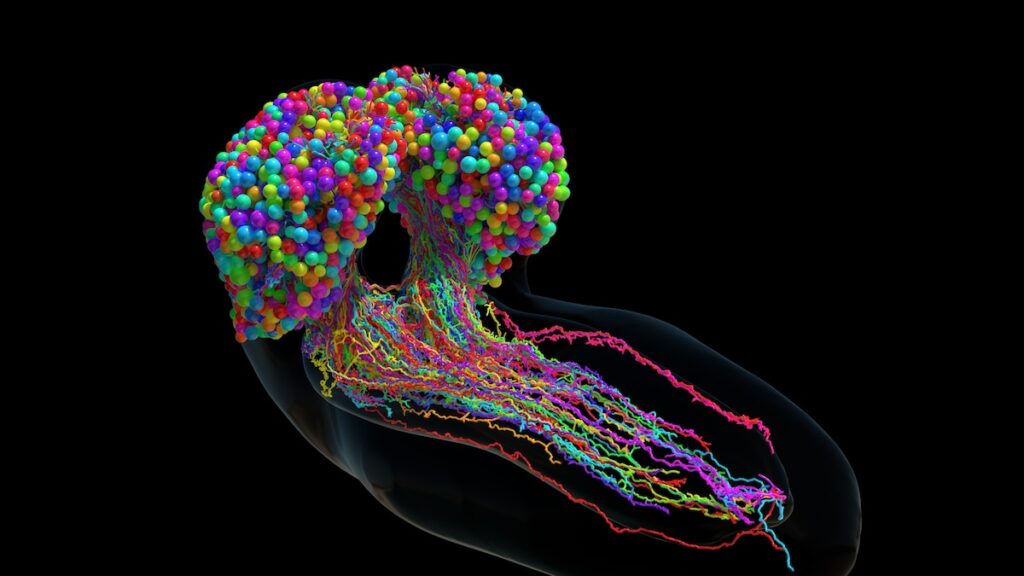Until now, only the brains of a roundworm, a sea squirt, and a marine worm have been completely mapped; each of which contains just a couple of hundred connections.
But a complete map of the connectome of a fruit fly larva reveals it contains more than 3,000 neurons and more than half a million connections between them. Developing this map took an international team of scientists more than five years. Although a fruit fly brain is much simpler than that of humans, the techniques developed will help map more complex brains in the future.
The neural circuits In the fruit fly brain look similar to neural networks used in machine learning. Understanding the similarities and complexities of the fly brain connectome can help to decipher how the human brain works and how neurological diseases develop. It can also lead to the development of new machine learning methods and more efficient artificial intelligence systems.
5. Pigment-producing cells get “stuck” causing gray hairs
Scientists show that when pigment-producing cells, called melanocytes, get stuck in an immature state, they fail to develop their blonde, brown, red, or black, hair color. This arrested state leads to graying hairs. New hair grows from follicles, found in the skin, where melanocytes also reside.
The scientists at New York University observed single melanocyte stem cells migrate up and down the individual hair folicle of mice over two years. To their surprise, they found that melanocyte stem cells can switch back and forth from gray immature stem cells to mature colored cells as they traverse up and down during the life cycle of the hair. But as hair ages, the melanocyte stem cells get sluggish after multiple cycles and become trapped near the base of the hair as immature melanocytes. With no pigment being produced, the hair turns gray.



